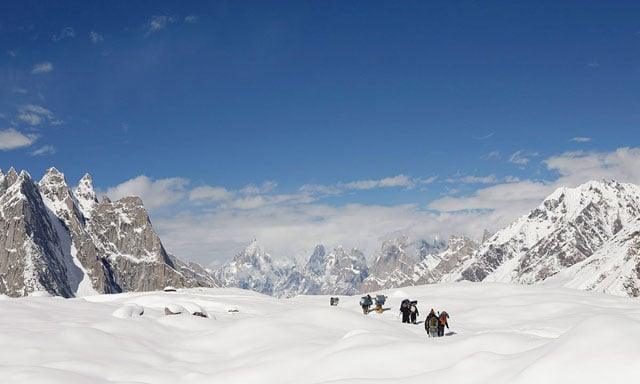Islamabad:
Snowfall in Asia’s Hindu Kush-Himalayan mountain ranges has reached a 23-year-old low and threatened nearly two billion people who depend on snowmelt for water, scientists warned in a report.
The Hindu Kush-Himalayan series, extending from Afghanistan to Myanmar, has the largest reserves of ice and snow outside the Arctic and Antarctic and is an important source of fresh water for about two billion people.
Researchers found “a significant fall in seasonal snow over the Hindu Kush Himalayan region, with snowpersistence (time -snuggling on earth) 23.6 percent below normal – the lowest in 23 years,” said the International Center for Integrated Mountain Development (ICOGMOMMENT).
“This trend, now in its third year in a row, threatens water safety for nearly two billion people,” it said in his Snow Update report. The study also warned of “potential lower river flows, increased groundwater dependence and increased drought risk”.
Sher Muhammad, the lead author of the ICOGS -Report, said AFP that “this year started the snowfall late January and remained low in the winter season on average”.
Several countries in the region have already issued drought warnings with upcoming harvests and access to water that is at risk of populations already facing more frequent heat waves.
The intergovernmental Icimod organization consists of the Member States of Erghanistan, Bangladesh, Bhutan, China, India, Myanmar, Nepal and Pakistan.
It called on countries that depend on the 12 major river basins in the region to develop “improved water management, stronger drought preparedness, better early warning systems and greater regional cooperation”.



